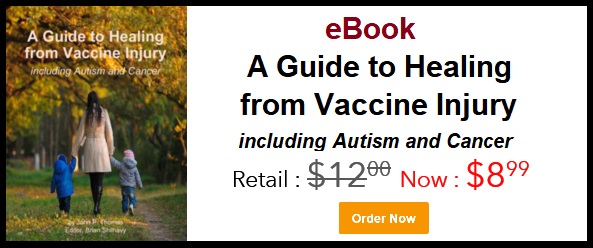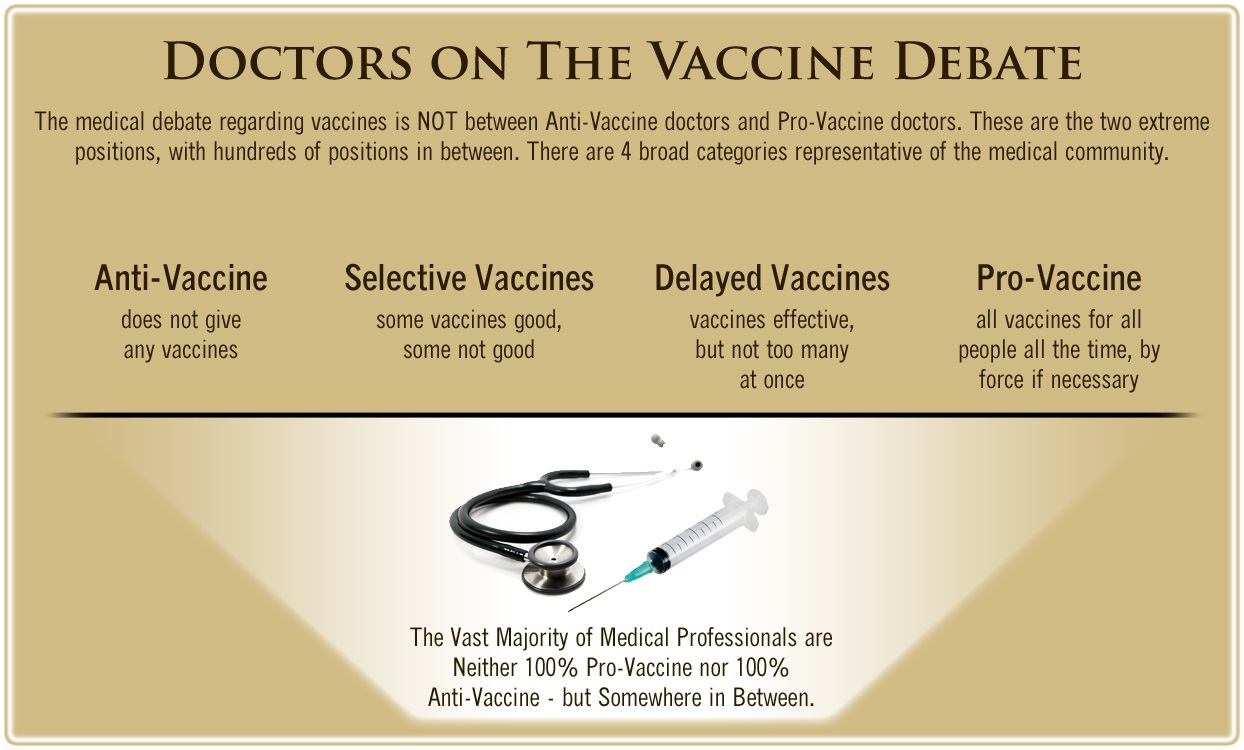By Tara Gramza, Phoenix AZ
Sanevax.org
I am a labor and delivery nurse at Scottsdale Osborn, and studying to become a nurse practitioner. My daughter was born on December 6, 1999. She was approximately 14 years, and 2 months old when she first suffered an adverse reaction to a vaccine.
J.G. was a happy, very healthy, normal, teenage girl. All that changed when the doctor in her pediatrics office recommended she receive Gardasil as prevention against cervical cancer.
As a mother and an informed registered nurse, I was confident in the vaccination and willing to allow J.G. to be vaccinated. On January 7, 2012, J.G. received her first dose of Gardasil at East Valley Pediatrics in Arizona. She progressed normally over the next few months, showing no apparent signs of an adverse reaction to the vaccination.
On July 26, 2012, J.G. received the second shot of Gardasil at East Valley Pediatrics in Arizona. She again progressed normally, still showing no apparent signs of adverse reaction.
On January 23, 2013, J.G. received her third and final injection of Gardasil at East Valley Pediatrics.
By March of 2013, I noticed that J.G. was bruising relatively easily, but thought she was a normal teen with maybe a low iron deficiency. After all, she was growing normally and she had just started menstruating. However, J.G. had never bruised like this before, and I had never seen the bruises shaped like this before. I was concerned, but chalked it up to her being an active, growing teenager. Being a nurse, I did not see any reason for immediate concern.
However, my concern increased in July of 2013 during a vacation to Hawaii. J.G. was playing like a normal kid would and was pushed off the boat, hitting her hip against the side.
The next day, the bruise that developed looked like she had been hit super hard, almost as if someone had taken a baseball bat to her hip. I remember asking her, “How hard did you hit the boat?”
She replied, “Not that hard, I guess it’s low iron like you suggest.”
Despite my nursing background, I still did not think anything was seriously wrong.
Ultimately, at the end of January of 2014, J.G. and I went to see her primary care doctor, Dr. Chapman, for a well-child check-up. We reported to her that J.G. was bruising a lot and had been for months. We thought she needed her iron level checked.
Dr. Chapman sent her for labs. That afternoon, we had her labs drawn.
The next morning, we received a phone call. Dr. Chapman told us J.G.’s platelets were low (I believe at 23k), and she needed to see a hematology doctor A.S.A.P.
I picked up J.G. from school and kept her home until her appointment in 2 days. When we arrived to the office at Phoenix Children’s Hospital, they took more blood samples, 14 tubes, I believe, to double-check the labs and verify the diagnosis. She was again low – at approximately 24k platelets. They then asked how long we had noticed symptoms, and if we had seen bloody noses or spots on her skin. She had not at this time, just bruising.
Phoenix Children’s Hospital decided to refer J.G. to a rheumatologist named Dr. Ede and have her follow up with Dr. Shah, the hematologist. The plan was to send her labs and watch her to see what her body will do.
Dr. Ede told us during our appointment that J.G. did not meet the guidelines for Lupus, and her urine was negative for any indication of kidney damage that is present with kids with Lupus.
He did tell us that her labs were positive for something called Anti-phospholipid antibodies. This meant she was at high risk for clots. He wanted to follow her case, but felt she was not going to be a Lupus patient. He also asked that her labs be run again prior to any treatment for low platelets, such as Immunoglobulin therapy (“IGG”) to recheck the ANA and Double Stranded DNA.
J.G. was diagnosed on February 11, 2014, with immune thrombocytopenic purpura, ITP.
Dr. Shah told us J.G. would probably remain in the 30k platelet range for a few months, and would likely need intervention therapy such as IGG, Rituximab, or steroids.
The antiphospholipid issue was explained as being a possible positive as an auto immune response. The physicians could not say for sure which autoimmune condition came first, antiphospholipid antibody syndrome or thrombocytopenia.
They also said her labs were all negative for virus or other causes of ITP, and decided it was more likely a chronic immune thrombocytopenia. For several months, J.G. did stay at around 35K platelets.
Then, in May of 2014, J.G. experienced a seriously heavy period, nose bleeds twice in one day that would not stop, and little red dots all over her arms and legs. We took her to the Phoenix Children’s Hospital urgent care and they found J.G.’s platelets were 14K. (Note: a normal platelet count ranges from 150,000 to 450,000)
Dr. Williams, a hematologist with Dr. Shah, began seeing J.G. They told us to come back in the morning first thing for her first round of IGG. She was admitted all day for the infusion. They ran her blood for labs that Dr. Ede requested and started the infusion. These labs showed her ANA and double stranded DNA were both negative now. Dr. Ede decided to continue to follow her case, but did not need to see her anymore, because she does not meet the guidelines for Lupus.
J.G. came back to Phoenix Children’s Hospital for labs again to check her platelets a few days later. Her levels were around 75K. However, they quickly fell to 10K again, and she was then admitted again for another dose of IGG. Her levels rose again to 100k then fell down again to 23K.
Dr. Williams decided it would be best to start her on a medication called Rituximab to try to reverse the effects of her immune system’s response by resetting her B cells that cause her body to mark her platelets for destruction.
That night, J.G. started with bleeding of the nose again, small red marks all over her body, including her bottom, and heavy, irregular menstrual bleeding. She went to urgent care again and was told she had a 4k platelet count. The physician on call reported to the hematologist who then decided to admit her again for a high dose of steroids known as dexamethasone.
She took a super high dose of steroids for a few days to try to give her a boost while the Rituximab did its job. The steroids made J.G. very ill, with a stomach ache, headache, and racing heart. She gained some weight, too. She started the infusions of Rituximab, which is given in 4 doses for 4 weeks.
J.G. was admitted outpatient all day for those infusions and tolerated it well. She was to continue the lower dose steroids for several weeks so her platelet levels would stay above 25k. She did remain around 30K for many weeks. Then in August of 2014, her platelets jumped to over 150k. She was doing great and responding well to the treatment. She was removed from steroids. She officially completed Rituximab on June 24, 2014, and had a complete response with normal platelet count since July of 2014.
We have spent numerous hours and dollars fighting J.G.’s illness, all brought about by the Gardasil vaccination.
Worse yet, J.G. has lost her teenage years due to her debilitating condition, and cannot live a normal life. The fear of bruising and her potentially low platelet count dominates her mind wherever she goes.
J.G. continues to remain in remission, and continues to be seen by Dr. Williams every few months. During her last visit in January of 2015, her labs were rerun to show a negative DNA and slightly positive ANA and positive antiphospholipid antibodies.

Although J.G. continues to be in remission, “J.G. has lost her teenage years due to her debilitating condition, and cannot live a normal life.” Image supplied by family.
Dr. Williams has said he thinks that the antiphospholipid antibodies and ANA should go away in time. However, she is still at a high risk for chronic ITP due to her age, her history of bruising post-vaccination, and the presence of other antibodies.
Her labs have continued to remain positive and her court expert Dr. Shoenfeld thinks she will remain APS positive for life. It will never go away. She will have high clot risk and the risk of return of blood related disorders and high pregnancy risk. Unfortunately it won’t go away. But so far so good. She’s still healthy.
No child should have to go through what my daughter has experienced.
Read the full article here.
Medical Doctors Opposed to Forced Vaccinations – Should Their Views be Silenced?
One of the biggest myths being propagated in the compliant mainstream media today is that doctors are either pro-vaccine or anti-vaccine, and that the anti-vaccine doctors are all “quacks.”
However, nothing could be further from the truth in the vaccine debate. Doctors are not unified at all on their positions regarding “the science” of vaccines, nor are they unified in the position of removing informed consent to a medical procedure like vaccines.
The two most extreme positions are those doctors who are 100% against vaccines and do not administer them at all, and those doctors that believe that ALL vaccines are safe and effective for ALL people, ALL the time, by force if necessary.
Very few doctors fall into either of these two extremist positions, and yet it is the extreme pro-vaccine position that is presented by the U.S. Government and mainstream media as being the dominant position of the medical field.
In between these two extreme views, however, is where the vast majority of doctors practicing today would probably categorize their position. Many doctors who consider themselves “pro-vaccine,” for example, do not believe that every single vaccine is appropriate for every single individual.
Many doctors recommend a “delayed” vaccine schedule for some patients, and not always the recommended one-size-fits-all CDC childhood schedule. Other doctors choose to recommend vaccines based on the actual science and merit of each vaccine, recommending some, while determining that others are not worth the risk for children, such as the suspect seasonal flu shot.
These doctors who do not hold extreme positions would be opposed to government-mandated vaccinations and the removal of all parental exemptions.
In this article, I am going to summarize the many doctors today who do not take the most extremist pro-vaccine position, which is probably not held by very many doctors at all, in spite of what the pharmaceutical industry, the federal government, and the mainstream media would like the public to believe.









Leave a Reply